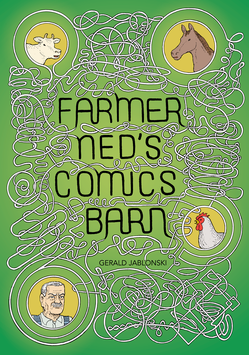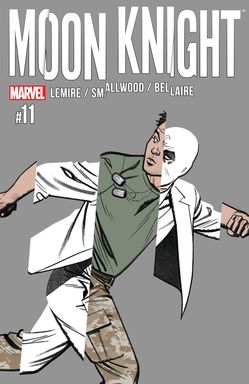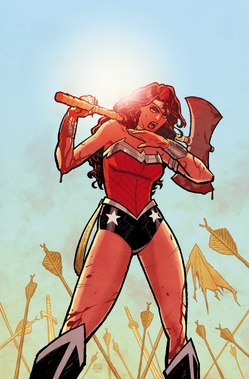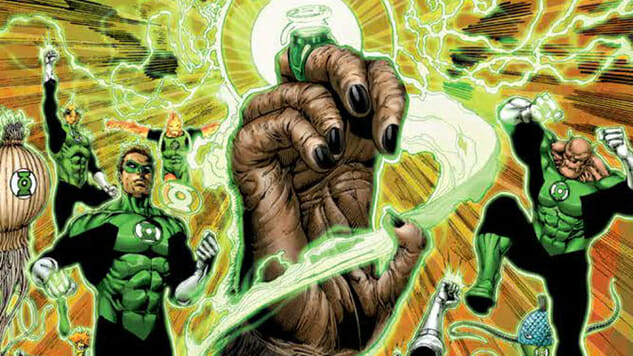
Welcome back to Required Reading—notice anything new? We’ve revamped our list formatting to bring you a smoother reading experience, more in line with the rest of Paste’s offerings. Below, you’ll find our weekly rundown of the best offerings from Marvel, DC, Dark Horse, Image and a host of other publishers, all ready and waiting for you on shelves (and digital storefronts) come Wednesday morning. The House of Mouse is in full synergy mode with another surefire Star Wars debut, DC Comics and BOOM! schedule a playdate between two of its fan-favorite properties, an early-modern Image mini-series returns and the master of Japanese horror delivers another collection of nightmares. So fear not: as changes swirl on a national level, our quality content remains the same (just in a different layout).
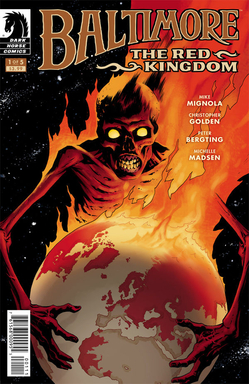 Baltimore: The Red Kingdom #1
Baltimore: The Red Kingdom #1
Writers: Christopher Golden, Mike Mignola
Artist: Peter Bergting
Publisher: Dark Horse
Mike Mignola falls in a category all his own for comics drenched in horror, the occult and small teams of complicated characters trying to prevent the apocalypse. His world-building is legendary, the storytelling skillful and the art always astonishing. In 2010, Mignola and novelist Christopher Golden introduced Lord Baltimore, a man struggling against vampires that appeared in Europe after the end of World War I. Since then, new stories have emerged every couple months, first with artist Ben Stenbeck and now with Peter Bergting. The individual issues are well paced, but what makes Baltimore so strong is that each story arc is self-contained enough to make sense to new readers while building on previous continuity enough to keep long-term fans invested. In The Red Kingdom, Baltimore is missing as the ultimate evil rises, and his scattered allies try their best to fight back in the face of terror. It’s a familiar, but particularly prescient story given the state of the world, and, like most Mignola outings, promises to be a great read. Caitlin Rosberg
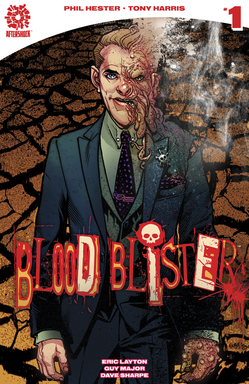 Blood Blister #1
Blood Blister #1
Writer: Phil Hester
Artist: Tony Harris
Publisher: Aftershock Comics
It’s still difficult to put a finger on Aftershock’s guiding genre mission; offerings range from erotic body horror to straight-up capes-and-tights to brutal war stories, with the only connecting thread being that most of its writing talent is a known quantity from preceding Big Two work. Blood Blister doesn’t buck that trend—Phil Hester has been in the game for years, both as a writer and as an artist on books like Green Arrow—but it does bring in one of the publisher’s biggest art draws to date with Tony Harris, the artist behind Ex Machina and much of the cult-favorite Starman. The pitch has shades of Stephen King’s Thinner, as protagonist Brandon Hull’s easy immorality begins to manifest on his body in grotesque fashion, and with Harris providing his trademark photo-realistic visuals, you can be sure that Blood Blister gnarlier elements will pack a stomach-churning punch. Steve Foxe
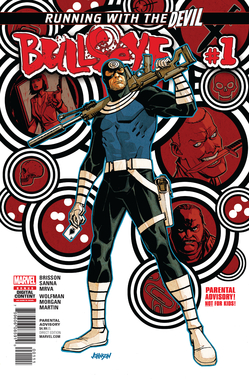 Bullseye #1
Bullseye #1
Writers: Ed Brisson, Marv Wolfman
Artists: Guillermo Sanna, Alec Morgan
Publisher: Marvel Comics
Daredevil’s premier sharpshooting nemesis hasn’t yet made his Netflix debut, but that’s not stopping Marvel from folding him in alongside Kingpin and Elektra for a wave of Hornhead-related launches. We put this trio on our Most Anticipated of 2017 list, and with good reason: Bullseye comes to us from The Violent scribe Ed Brisson, who has steadily built a career on unflinching portrayals of morally dubious protagonists. Joining Brisson is artist Guillermo Sanna, one of several new names at Marvel, as well as the more proven back-up team of legendary writer Marv Wolfman and Midnighter artist Alec Morgan. Marvel’s gearing up for a lot of Netflix-related content this year, but Bullseye is still an early favorite to—ahem—hit the mark. Steve Foxe
 Darth Maul #1
Darth Maul #1
Writer: Cullen Bunn
Artist: Luke Ross
Publisher: Marvel Comics
Finally. Marvel’s Star Wars line has succeeded in one realm where Dark Horse’s offerings rarely did—in expanding upon the Original Trilogy era in meaningful, interesting ways. But aside from a worthwhile Rebels tie-in, pre-A New Hope pickings have been slim. Darth Maul aims to fill that gap by focusing on The Phantom Menace’s mysterious Zabrak Sith Lord. Writer Cullen Bunn is no stranger to antagonists-as-protagonists, most notably in his long tenure across multiple books with Magneto, which makes him a solid fit for the tattooed murder machine. Luke Ross, meanwhile, completed his Jedi training as artist for The Force Awakens’ adaptation. While Maul’s image as a near-mute terror took a bit of a beating in the otherwise stellar Clone Wars animated series thanks to his manic, borderline-whiney portrayal, the double-bladed assassin remains one of the best additions to the lore from the controversial Prequel Era, and a character deserving of the expanded-universe treatment. Steve Foxe
Farmer Ned’s Comic Barn
Writer/Artist: Gerald Jablonski
Publisher: Fantagraphics
Gerald Jablonski’s obscurity remains heresy for the sole reason that the underground cartoonist’s craft is as singular today as it was throughout the late ‘70s and ‘80s. Tiny characters packed with minute detail converse endlessly as tendrils of dialogue wind like a sequential-art tapeworm through dense panels. This tome collects one of Jablonski’s most notable characters, Farmer Ned—a borderline curmudgeon who laments the state of the world to a talking stable of barnyard animals. Jablonski debuted in Art Spiegelman and Bill Griffith’s Arcade anthology, and that lineage is well deserved; uncompromising, weird, enjoyable and tedious in equal turn, Jablonski’s work is a blaring affirmation of what bizarre boundaries comics can push. Sean Edgar
 Judge Dredd: The Complete Brendan McCarthy
Judge Dredd: The Complete Brendan McCarthy
Writers: Al Ewing, Alan Grant, John Wagner
Artist: Brendan McCarthy
Publisher: IDW Publishing
What’s old is always new again in entertainment, and especially in comics. With the revival of titles like Doom Patrol and the surge of books with explicit political commentary, trends from the late ‘80s and early ‘90s are coming back around. For those who revel in this renaissance, a brand new hardcover collection of Brendan McCarthy’s Judge Dredd work is welcome news. McCarthy’s credits are numerous enough to be unwieldy, but it’s worth mentioning his numerous collaborations with Peter Milligan and his work on the Highlander movies, as well his design and story contribution to Mad Max: Fury Road with director George Miller. McCarthy’s style as an artist is dense and textured and just as carefully crafted as his TV and film work, and he worked on some of the essential Judge Dredd runs. For American readers who never got into the British sensation, this book should be a great intro to both McCarthy and Dredd, not to mention the era-defining aesthetic that came out of British comics in the ‘80s and went on to launch the careers of many creators revered in the industry today. Caitlin Rosberg
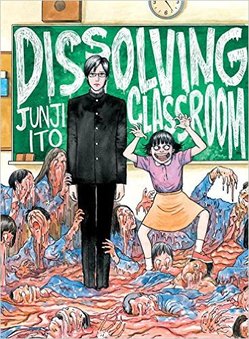 Junji Ito’s Dissolving Classroom Vol.1
Junji Ito’s Dissolving Classroom Vol.1
Writer/Artist: Junji Ito
Publisher: Vertical Comics
It’s not evident thanks to his English-language publishing schedule, but horror-manga master Junji Ito took a break from terror tales in the last decade, with 2015’s Fragments of Horror marking his first substantial work in the genre in a few years—to admittedly mixed results. Ito himself cops to as much in the backmatter, where he questioned whether or not he had rediscovered his groove yet. Dissolving Classroom marks Ito’s second modern short story collection, named with a nod to Kazuo Umezu’s seminal Drifting Classroom. Even if Ito’s delicate balance of body horror and goofiness felt slightly…off…in Fragments, any new work from such an accomplished master of the grotesque is a welcome addition to libraries and crypts everywhere. Steve Foxe
Moon Knight #11
Writer: Jeff Lemire
Artist: Greg Smallwood
Publisher: Marvel Comics
Moon Knight remains the best comic released by a mainstream publisher, deconstructing mental illness in the tale of one man’s struggle against a manipulative Egyptian god. Writer Jeff Lemire veers far from the character’s street-action foundation, concerned almost exclusively with the psychological fault lines of a (maybe) millionaire who dresses in a white mask and punches bad guys in the name of an outer-space bird. While former writers have left this aspect ambiguous, Lemire is offering a far more nuanced depiction of Dissociative Identity Disorder than other entertainment media (looking at you, Split). The title has also served as a showcase for Greg Smallwood, who grounds Moebius-grade stellar backdrops with thoughtful facial expressions and character acting. Lemire just announced that he would be leaving fellow Marvel title Old Man Logan, and while his eventual exit from mainstream superhero properties is a foregone conclusion, Moon Knight could well stand alongside Essex County and The Underwater Welder as some of his best work. Sean Edgar
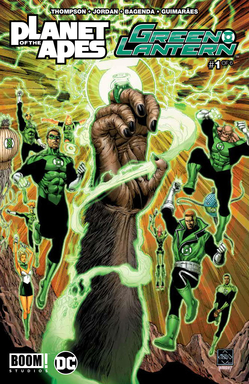 Planet of the Apes/Green Lantern #1
Planet of the Apes/Green Lantern #1
Writers: Robbie Thompson & Justin Jordan
Artist: Barnaby Bagenda
Publisher: BOOM! Studios/ DC Comics
DC’s cross-property crossover train keeps chugging this week with the debut of Planet of the Apes/Green Lantern, the second BOOM!/DC collaboration this year following the popular Justice League/Power Rangers. Unlike those two multicolored squads of do-gooders, it’s not clear what immediate connection Oa’s finest share with intelligent apes, but when has that ever stopped the comic industry from indulging itself? Luckily, as with JL/PR, the publishers have assembled a genuinely enticing creative team to sell the intrinsically bonkers premise. Writer Robbie Thompson has made a fast name for himself on arachnid-related titles at Marvel, while Luther Strode writer Justin Jordan has a few GL runs under his belt already from the New 52 era. Artist Barnaby Bagenda brings his own cosmic accolades with him, having just wrapped the critically acclaimed Omega Men alongside writer Tom King. Improbably, crossovers that would seem like cheap cash-grabs 15 years ago keep turning into must-buys, and that’s a bizarre trend we can get behind. Steve Foxe
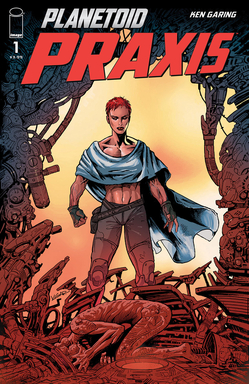 Planetoid: Praxis #1
Planetoid: Praxis #1
Writer/Artist: Ken Garing
Publisher: Image Comics
Ken Garing’s Planetoid was a sleeper favorite during the days before Saga’s debut and Image’s renaissance as the premiere creator-owned publisher, and now the writer/artist returns after half a decade to continue his sci-fi resistance story. In the 2012 mini, Garing’s cast conquered their robot overlords. In Praxis, the resulting peace is interrupted by a surprise interloper. Garing’s clean line is appealing, but five years is a long time in comics, and the scene—particularly at Image—isn’t hurting for quality sci-fi options. Still, Garing is an early and rarely mentioned name in Image’s modern heyday, which makes Praxis worth a look for robo-readers of Invisible Republic, Drifter and Descender. Steve Foxe
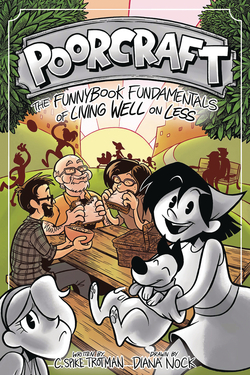 Poorcraft Vol. 1
Poorcraft Vol. 1
Writer: C. Spike Trotman
Artist: Diana Nock
Publisher: Iron Circus Comics
Iron Circus is mostly known for incredibly successful Kickstarters, printing female- and LGBTQ-friendly erotica and anthologies full of diverse rising talent. But back in 2013, web cartoonist Spike Trotman put out a book called Poorcraft: The Funnybook Fundamentals of Living Well on Less with artist Diana Nock. It’s as close to a manual for frugal adulthood as anyone’s ever made, with tips and tricks on how to live independently, balancing needs, wants and budgets like a grown-up. There were caveats, of course, and Trotman herself points out readily that most of the advice applies best in moderately populated areas where resources are easier to access, but the book is full of solid tips and tricks. She’s updated Poorcraft Vol. 1 for 2017 and reprinted the book, which was only available from Comixology or as an ebook through Iron Circus’s site. With a whole new generation of people entering uncertain economic times, Trotman and Nock’s practicality, skill and wry humor will be a great tool for facing the future. Caitlin Rosberg
Wonder Woman by Brian Azzarello and Cliff Chiang (Absolute Edition) Vol. 1
Writer: Brian Azzarello
Artists: Cliff Chiang, Kano, Dan Green, Tony Akins
Publisher: DC Comics
The fairer third of DC Comics’ vaunted Trilogy hasn’t experienced the same frequency of legendary runs as Batman and Superman. Wonder Woman’s inception from William Moulton Marston broke ground with its sexual, bondage-themed overtones and feminist-first attitude, and George Perez’ lush details gave the Amazon princess new life throughout the ‘80s.
But for the most epic, consecutively enjoyable run, Brian Azzarello and Cliff Chiang reign on high. Azzarello returned Diana to her Greek mythology roots, and crafted a violent, melodramatic family clusterfuck worthy of Sophocles. Within the opening pages, the title heroine’s accepted heritage is drastically altered; she’s not only the daughter of a philandering deity, but must protect a new half-sister from that deity’s angry, angry wife. Cliff Chiang’s thick lines and heroic poses fit the war-drum energy pulsing behind every sword flourish and spurned diatribe. This absolute edition collects the first 19 issues of the 35-chapter run and is an essential foundation to understand fiction’s most lauded heroine before checking out Patty Jenkins’ film this June. Sean Edgar
